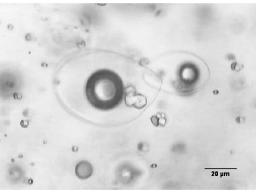In order to assess the effect of the melt composition on bromine concentrations in magmas, we have investigated bromide solubility for water-saturated iron-free silicic melts with variable Na+K/Al and Si/Al molar ratios (albite, haplogranite, rhyolite and pantellerite). The experiments were performed in rapid quench cold-seal autoclaves over a range of pressure: 1, 1.5, 2 kbar, and temperature: 900, 1000, and 1080°C with run durations from 5 to 7 days. A series of natural volcanic glasses and melt inclusions hosted in magmatic minerals were analysed together with the synthetic glasses by PIXE (Proton Induced X-rays Emission, Nuclear Microprobe, Pierre Süe Laboratory). The Br concentrations range from 5360 to 7850 ppm for albite, from 2800 to 3900 ppm for haplogranite, from 4300 to 5900 ppm for rhyolite, and from 9745 to 11250 ppm for pantellerite. Bromine concentrations are negatively correlated with pressure in H2O-saturated silicic melts, and vary with (Na+K)/Al molar ratio with a minimum value at the ratio close to unity. Bromine behaves similarly to chlorine for all of these melt compositions. The bromide solubility is similar in albitic and rhyolitic melts, which implies that Df/m is nearly the same for both compositions and is applicable for natural rhyolites as suggested in a previous study. This means that the volcanic Br contribution to the atmosphere may be significant. In natural obsidian samples and MI hosted in quartz, olivine and leucite, the Br concentration varies from < 3 to 28 ppm, with the highest concentrations in pantelleritic melts. We attribute the low bromine concentrations of natural melts to a low initial abundance of this halogen in the Earth mantle. However, because bromine behaves as an incompatible element before water exsolution, our results imply that magmas could contain much more dissolved Br prior to eruption and water degassing than the few ppm usually measured in volcanic rocks. Bromine behaviour during magma crystallisation is controlled by its partitioning into the H
2O-rich fluid phase when occurs. On the contrary, its potential high solubility in silicate melts makes it a very sensitive chemical tracer of magma contamination by sea water and Br-rich material. Therefore, the systematic study of Br in subduction-related magmatic samples may help for a better understanding of volatiles cycling between the Earth reservoirs. Our experimental approach is now focused on bromine and iodine degassing processes during magma decompression for subduction-zone related magmas.
Related publication: GCA 67, 1689-1697, 2003
Collaboration :
Bayerisches Geoinstitut Bayreuth, Germany.



 Physics and chemistry for life sciences and the environment › Chimie environnementale et dépollution / Environmental chemistry and depollution
Physics and chemistry for life sciences and the environment › Chimie environnementale et dépollution / Environmental chemistry and depollution 









